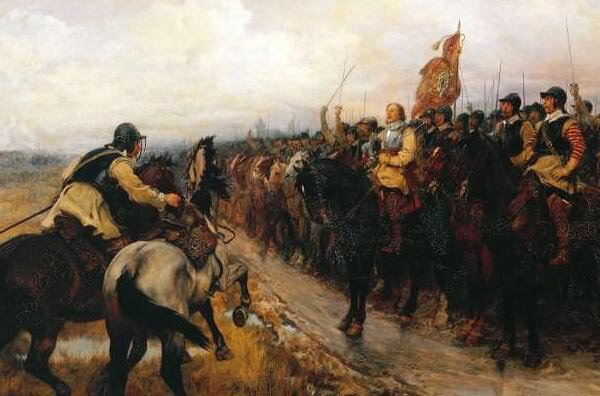
Above: Oliver Cromwell at the Battle of Dunbar, painted by Andrew Carrick Gow, 1886 (detail).
150 – the estimated number of English towns that suffered extensive damage to property from bombardment in English Civil War battles.
50 – the estimated number of villages suffering the same fate.
10,000 – the approximate number of town houses destroyed.
1,000 – the approximate number of village houses destroyed.
200 – the approximate number of country houses or mansions destroyed.
85,000 – the estimated number of people made homeless during the Civil Wars.
2% – the percentage of the population of England made homeless.
3 – the number of French cavalry regiments who fought for the Royalists, joining in support of the King (whose wife, Henrietta Maria, was French) towards the end of the war. Foreign soldiers also fought for the Roundheads.
10-20% – the proportion of men in England and Wales who fought in the Civil Wars.
62,000 – the estimated number of people who died between 1642-1646.
80,000 – the number of people taken prisoner in this period.
85,000 – the estimated number of people killed in combat.
100,000 – the estimated number of additional deaths occurring as an indirect result of the Wars, mainly from diseases (such as ‘war typhus’, dysentery, and plague) spread by troops.
29% – the increase in rate of burials nationally during 1643-64.
120% – the increase in burials in Berkshire during this same period.
10% – the drop in the birth rate in the 1650s compared to the 1630s.
1,000% – the estimated peak increase in taxes during the Civil Wars.